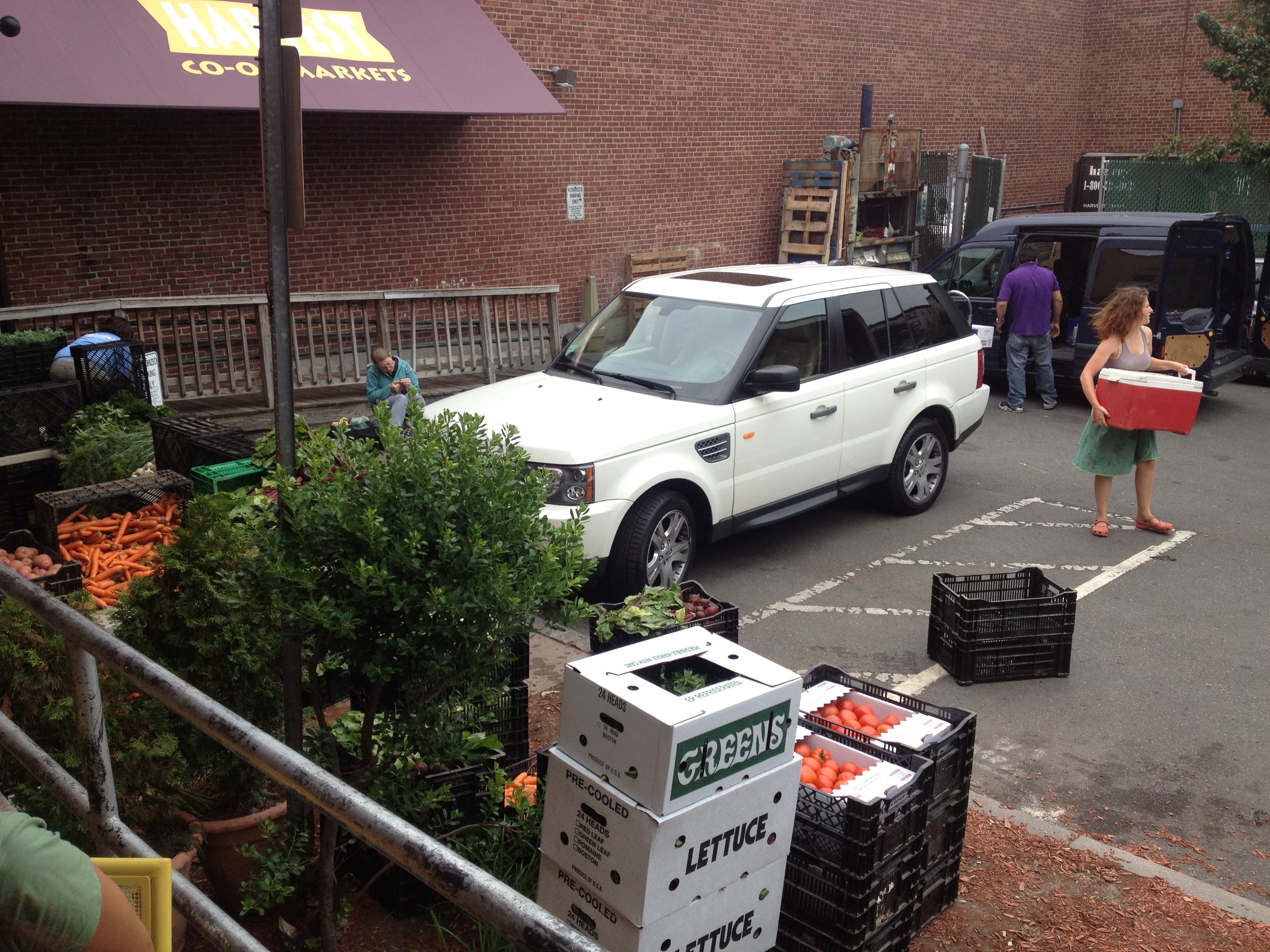Can CSAs be mainstream?
CSA (community supported agriculture) developed in Massachusetts in the 1980s, probably by some hippies. Since then they’ve become one of the major economic forces supporting small-scale farmers and local food systems. If there are some economics students out there this would make a fascinating paper.
The idea is that you give a farmer money when they need it, in the winter. And then they share the bounty of their harvest with you. You end up getting something like $70 in organic produce each week for an up front investment of something like $20. And you learn a ton and support your local farmer.
But there are some qualities of CSAs that may keep the number of participants limited:
- Pick-ups are typically at the farm, this rules out most of the population.
- Pick-ups, farm or otherwise (pictured above is a pick-up in the back parking lot of the Harvest Co-op) don’t exactly feel “professional,” sometimes they’re a hassle and inconvenient
- The sign-up for a CSA share has a definite 1960s feel. Paper, checks, stuff like that. It’s nothing like a retail experience, and generally not electronic at all.
- The money has to come up front. That can be tough.
- A CSA pick-up is nothing like going to the grocery store. You get what they are harvesting. That means some stuff you don’t recognize, some stuff you can’t pronounce. And plenty of produce you don’t have any idea how to cook (I’m struggling with Eggplant this season)
When we launched our CSA experimental program we were wondering whether we could address some of the challenges of CSAs to make them more mainstream. “What if it was more like a retail experience? What if you could pick up on a day that fit your schedule, any day of the week? What if we find clever ways to make the financing less up-front?”
But I think I underestimated how much of a challenge the last one is. As one of my friends put it: “Yeah, it may be a lot of vegetables, but they’re not what I would be buying.” So is there a solution for that?
We’re gearing up for season 2 of the CSA. I think in total we brought something like $90,000 to CSAs in 2012 due to our program. I’m hoping to triple that number for 2013. But the real win is going to be getting to the point where 20%+ of the population uses CSAs. We’d all be saving money, cooking better food, and there would be FARMS EVERYWHERE!


